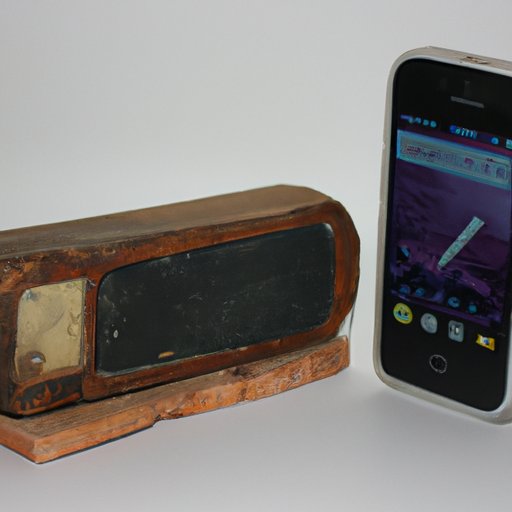Introduction
A smartphone is a handheld device that combines the features of a cell phone with those of other popular mobile devices, such as a personal digital assistant (PDA), music player, and digital camera. It typically offers a full range of features and applications, including Internet access, email, media playback, and gaming.
In this article, we explore the history of the invention and development of the smartphone, from its earliest origins in mobile technology to its current status as a ubiquitous part of modern life. We’ll also look at some of the key innovators who helped shape the smartphone into the device it is today and examine the impact the smartphone has had on society.
The purpose of this article is to provide an overview of the invention and development of the smartphone and to trace its roots to early mobile technology.

A Historical Overview of the Invention of Smartphones
The invention and development of the smartphone can be traced back to the early days of mobile technology. The first mobile phone call was made in 1973 by Martin Cooper, a researcher at Motorola, using a prototype of what would become the DynaTAC 8000X. This was the first cellular phone, but it lacked the features and capabilities of today’s smartphones.
The first smartphone was developed and released in 1994 by IBM under the name “Simon.” This device featured a touch screen, address book, calendar, calculator, note pad, fax, and games. It also had limited email and web browsing capabilities, making it the first true “smartphone”.

How Technology Evolved to Create the Modern Smartphone
Over the years, advances in technology have allowed for the development of more powerful and feature-rich smartphones. Improvements in operating systems, such as Apple’s iOS and Google’s Android, have enabled the creation of devices with ever-increasing capabilities. Enhancements in hardware components, such as processors and memory, have allowed for faster and more efficient performance. And the expansion of network connectivity, such as 4G LTE, has enabled faster data speeds and improved coverage.

Exploring the Impact of the Smartphone on Society
The invention of the smartphone has had a profound impact on society. It has increased productivity by allowing users to stay connected and work from anywhere. It has improved communication by enabling instant messaging and video calls. And it has paved the way for new business models, such as the app economy, which has created countless jobs and opportunities.
“Smartphones have revolutionized the way we live, work, and play,” says John Giannandrea, Google’s AI chief. “They have changed the way we communicate, consume information, and interact with the world around us.”
The Innovators Behind the Invention of the Smartphone
The invention of the smartphone wouldn’t have been possible without the vision and creativity of several key innovators. One of the most notable names is Steve Jobs, the co-founder of Apple. He famously unveiled the iPhone in 2007, which revolutionized the industry and ushered in a new era of mobile computing.
Another key figure is Andy Rubin, the creator of the Android platform. His open-source operating system gave consumers more choice and unlocked a wave of innovation in the industry.
Other notable figures include Jony Ive, the designer behind many of Apple’s iconic products; Jeff Hawkins, the founder of Palm Computing; and Linus Torvalds, the creator of the Linux operating system.
Tracing the Early Ideas that Led to the Creation of the Smartphone
In order to understand how the modern smartphone was created, it’s important to trace the early ideas that led to its invention. In the late 1990s, mobile phones were becoming increasingly popular, but they were still limited in terms of features and capabilities. At the same time, personal digital assistants (PDAs) were gaining traction, offering users a more powerful and feature-rich experience.
It was this combination of mobile phones and PDAs that eventually gave rise to the modern smartphone. By combining the portability of the mobile phone with the power of the PDA, the smartphone was born.
Conclusion
The invention and development of the smartphone has had a profound impact on society. From its earliest origins in mobile technology to its current status as a ubiquitous part of modern life, the smartphone has changed the way we communicate, consume information, and interact with the world around us. It has also opened up new possibilities for businesses, giving rise to the app economy and creating countless jobs and opportunities.
The invention of the smartphone wouldn’t have been possible without the vision and creativity of several key innovators, such as Steve Jobs, Andy Rubin, and Jony Ive. Their pioneering efforts have led to the creation of a powerful and versatile device that has revolutionized the way we live, work, and play.
(Note: Is this article not meeting your expectations? Do you have knowledge or insights to share? Unlock new opportunities and expand your reach by joining our authors team. Click Registration to join us and share your expertise with our readers.)
